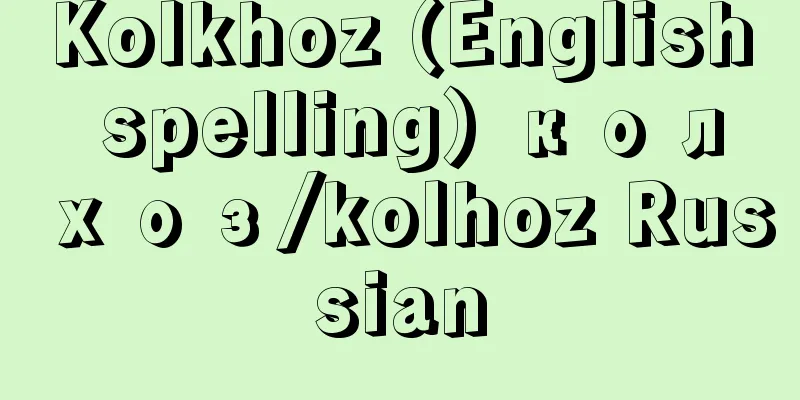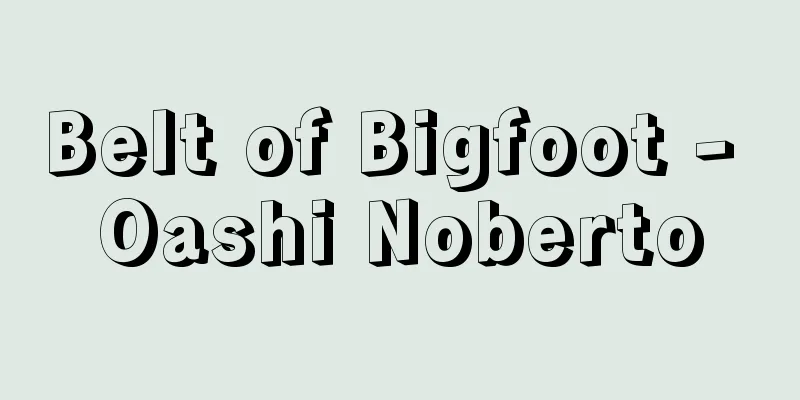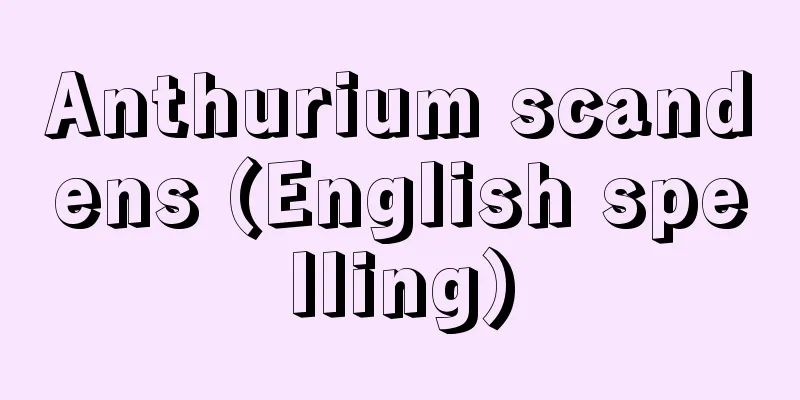Kolkhoz (English spelling) колхоз/kolhoz Russian

|
One of the agricultural management forms in the Soviet Union, an abbreviation of коллективное хозяйство (collective management). The Russian Revolution dismantled the old landlord system of land ownership. Land was declared nationalized, but land ownership in the 1920s was standardized and small-scaled small-scale farming. Total compulsory collectivization, which is qualitatively different from the partial and enthusiastic agricultural collectivization of the 1920s, was carried out in Soviet rural areas from 1930 onwards. In the lineage of Marx, Engels, Kautsky, and Lenin, the small-scale farming system was theoretically rejected, and there was originally an idea that large-scale, mechanized, and collective work were socialist agriculture. However, haste was warned against, and the method of persuasion by showing the actual thing was advocated, but in the wake of the grain procurement crisis around the end of the 1920s, total collectivization was carried out by administrative means under Stalin. Not only did millions of people who were branded as kulak (rich peasants) become victims, but peasants killed their livestock as a form of resistance, and the livestock population in the Soviet Union was halved in one fell swoop. It took until the late 1950s for it to recover. Initially, there were three types of collective farms - komunas, toz, and artel - but taking into account the resistance of small peasants, they settled on the artel type, which was based on individual ownership of housing, some livestock, small production tools, and personal side businesses, and which socialized large fields, facilities, and large livestock sheds to be run by collective labor. For this reason, kolkhoz has generally been translated as cooperative farm. Under socialized management, distribution to kolkhoz members was done in units of work days according to the quality and quantity of work, but later, payment was made in currency based on the quota and wage schedule for each occupation. Although it was supposed to be an autonomous organization, in reality, the wage schedule for the same occupation at the state farm became the standard. The highest decision-making body was the general assembly of kolkhoz members, which elected the chairman and chairman of the board of directors (for a term of three years), but in reality, the appointment of the chairman of large kolkhozes was controlled by higher organizations. The model articles of incorporation of the second kolkhoz members' congress in 1935 were used for a long time, but new articles of incorporation were adopted at the third congress held in 1969 under Brezhnev. The pillars of the new system were the strengthening of kolkhoz democracy, the industrialization of agriculture, and the improvement of the status of individual side businesses, but it seems that the sovkhozization of kolkhozes, which is effectively nationalization, was further strengthened. The power of higher-level organizations in personnel affairs increased, but the agricultural product purchasing price system was almost the same as that of state farms, and wages, unlike those in the Stalin era, were increasingly subject to the wage schedules of state farm workers. Furthermore, the proportion of state investment in equipment and facilities (basic investment) increased, and the so-called investment by the kolkhozes themselves was actually based on funds borrowed from the national bank and increased dramatically. Stalin considered kolkhozes to be a form of socialization one level lower than state-owned enterprises, and developed a strange theory that the survival of state-owned enterprises was the reason why the commodity form remained in the Soviet Union, but it is no exaggeration to say that after World War II, the Soviet kolkhozes were effectively nationalized. Although the number of kolkhozes steadily decreased after the war, except for a slight increase under perestroika, the total wage amount and machinery and equipment actually increased, and the average size of each enterprise became larger. In the past, kolkhozes were a source of industrialization that provided the state with 40-50% of their total harvest almost free of charge while being monitored by MTS (machine and tractor stations), which were the party's bases, and therefore lived under more difficult conditions than the few state-run farms. However, from the middle to the end of the Soviet era, they became closer to state-owned enterprises and even came under protection. After the collapse of the Soviet Union, with the exception of Armenia, where family management was relatively advanced, kolkhozes were divided and turned into joint-stock companies and small cooperatives in Russia and Ukraine, but overall it seems that these "enterprise management" has not essentially escaped the characteristics of the former collective farm. Since the mid-1990s, "resident management" and "fermer (family management)" have appeared as management types in statistics alongside these "enterprise management". [Hiromasa Nakayama] "Modern Soviet Agriculture" by Nakayama Hiromasa (1976, University of Tokyo Press)" ▽ "The State of Soviet Agriculture" by Nakayama Hiromasa (1981, NHK Publishing)" ▽ "The Volga Revolution" by Okuda Hiroshi (1996, University of Tokyo Press)" ▽ "Modern Russian Economic Theory" by Nakayama Hiromasa, Uegaki Akira, Suhara Manabu, and Tsuji Yoshimasa (2001, Iwanami Shoten) [Reference] | | |Source: Shogakukan Encyclopedia Nipponica About Encyclopedia Nipponica Information | Legend |
|
ソ連における農業の経営形態の一つで、коллективное хозяйство(集団の経営)の略称。ロシア革命は古くからの地主制的土地所有を解体した。土地国有が宣言されたが、1920年代の土地保有は標準化、零細化した小農体制であった。1920年代の部分的で熱狂的な農業集団化とは質的にも異なる全面的強制的集団化が1930年以降のソ連農村で展開される。マルクス、エンゲルス、カウツキー、レーニンという系譜で、小農体制は理論的に否定されていたのであり、大規模、機械化、集団作業こそが社会主義農業であるとする理念がそもそもあった。ただし性急さは戒められ、実物での説得という方法が主張されていたのであるが、1920年代末ごろの穀物調達危機を契機に行政的方法での全面的集団化がスターリンのもとで断行されたのである。クラーク(富農)の烙印(らくいん)を押された人々数百万人が犠牲となったのみならず、農民は抵抗の一つの形として家畜を殺してしまったので、ソ連の家畜は一挙に半減した。この回復には1950年代後半までかかった。当初コムーナ、トーズ、アルテリと3形態あった集団農場は、こうした小農の抵抗も考慮しつつ、住宅、家畜の一部、小生産用具、個人副業経営などを個人が保有することを基礎としたうえで、大圃場(ほじょう)、施設、大畜舎などを社会化し共同労働で営むアルテリ型に落ち着いた。それゆえコルホーズは一般に協同組合農場と訳されてきた。 社会化経営でのコルホーズ員への分配は、労働の質と量に応じての作業日という単位で行われていたが、その後、職種ごとのノルマと賃率表に基づいた貨幣支給となった。自主的組織というのがたてまえだが、事実上は国営農場の同じ職種の賃率表が規準とされるようになった。最高決議機関はコルホーズ員総会であり、そこで議長、理事長などが選挙される(任期3年)ということになっていたが、事実上、大きいコルホーズなどの議長人事は上部機関が握っていた。1935年第2回コルホーズ員大会の模範定款が長く用いられていたが、ブレジネフ下で1969年第3回大会が開かれ新定款が採択された。コルホーズ民主主義の強化、農業の工業化、個人副業経営の地位向上などが柱であったが、コルホーズのソフホーズ化、すなわち事実上の国有化はいっそう強まったとみられる。人事面での上部機関の力の増大もそうだが、農産物買付価格システムは国営農場のケースとほとんど一体となり、賃金もスターリン時代とは異なり国営農場員の賃率表が適用されるケースが増えた。さらに装備や施設などへの投資(基本投資)では国家投資の比重が増え、コルホーズ自身の投資といわれるものも、内実は国立銀行の融資を受けた資金に基づくものが激増した。スターリンは、コルホーズを国有企業よりも一級下位の社会化形態とし、その残存のゆえにソ連には商品形態が残っているという奇妙な理論を展開したのであるが、第二次世界大戦後のソ連のコルホーズでは事実上の国有が進展したといって過言ではない。コルホーズの経営数はペレストロイカのもとでの若干の増加を別とすれば大戦後は一貫して着実に減少したにもかかわらず、賃金総額や機械装備はむしろ増加してきたし、一企業の平均規模は大きくなっていたのである。 かつてコルホーズは党の拠点たるエム・テー・エス(機械・トラクター・ステーション)に監視されながらその総収穫の4~5割をもほとんど無償で国家に提供する工業化の蓄積源泉であり、それゆえ少数の国営農場に比較し困難な条件下にあったが、ソ連中期から末期にかけてそれは国有企業に接近し、かつ被保護化さえしていたのである。ソ連解体後、家族経営化が比較的進んだアルメニアなどを除けば、ロシア、ウクライナなどではコルホーズの分割・株式会社化・小協同組合化などが進められたが、全体的にはこうした「企業経営」はかつての集団農場の性格を実質的には脱していないとみられる。1990年代なかば以降は、統計上はこれら「企業経営」と並び「住民経営」「フェルメル(家族経営)」が経営類型として登場する。 [中山弘正] 『中山弘正著『現代ソヴエト農業』(1976・東京大学出版会)』▽『中山弘正著『ソビエト農業事情』(1981・日本放送出版協会)』▽『奥田央著『ヴォルガの革命』(1996・東京大学出版会)』▽『中山弘正・上垣彰・栖原学・辻義昌著『現代ロシア経済論』(2001・岩波書店)』 [参照項目] | | |出典 小学館 日本大百科全書(ニッポニカ)日本大百科全書(ニッポニカ)について 情報 | 凡例 |
<<: Colposcope - koruposukopu (English spelling) colposcope
>>: Kolbenheyer - Erwin Guido Kolbenheyer
Recommend
United Bible Societies
…The Japan Bible Society was formed in 1937, inde...
Uruatori - Uruatori
…At its height, it occupied the entire Armenian P...
Table year - Omotedoshi
A year in which fruit and other produce is plentif...
Golden needle vegetable
…The young shoots, buds and flowers of most speci...
《Union》
...2 volumes. Commonly known as "Gouhou.&quo...
Family Konzern (English spelling) familyKonzern
In a broad sense, it refers to a business group b...
Cecil, R. (English spelling) CecilR
…British politician. Graduated from Cambridge Uni...
Tsushima Shrine
Located in Shinmei-cho, Tsushima City, Aichi Pref...
Marqués de Santillana (English spelling)
...Don Juan Manuel, the nephew of the wise king, ...
Toyama clan
A warrior family of Mino in the Middle Ages and Ea...
Japan Steel Works, Ltd.
A manufacturer of cast and forged steel products, ...
Octopus legs - Octopus legs
A wet perennial plant of the Crassulaceae family. ...
object libido
...This libido also travels between the object an...
Illyrian Movement - Illyrian Movement
A nationalist and ethnic revival movement that too...
Currency Ladd - Karenci Ladd
In the early New South Wales settlements, the con...









